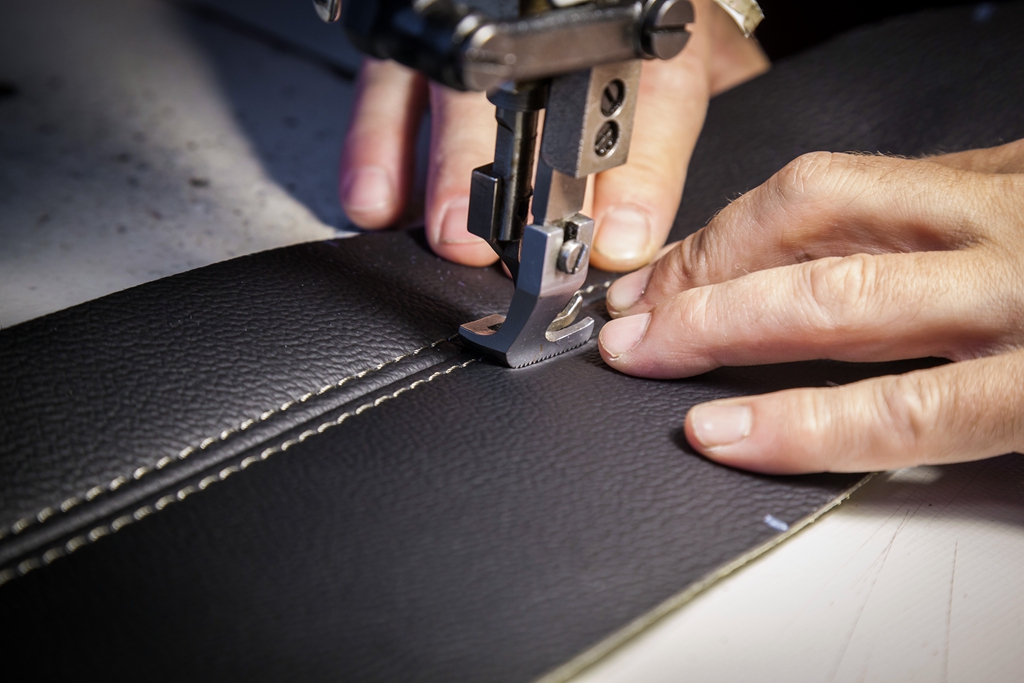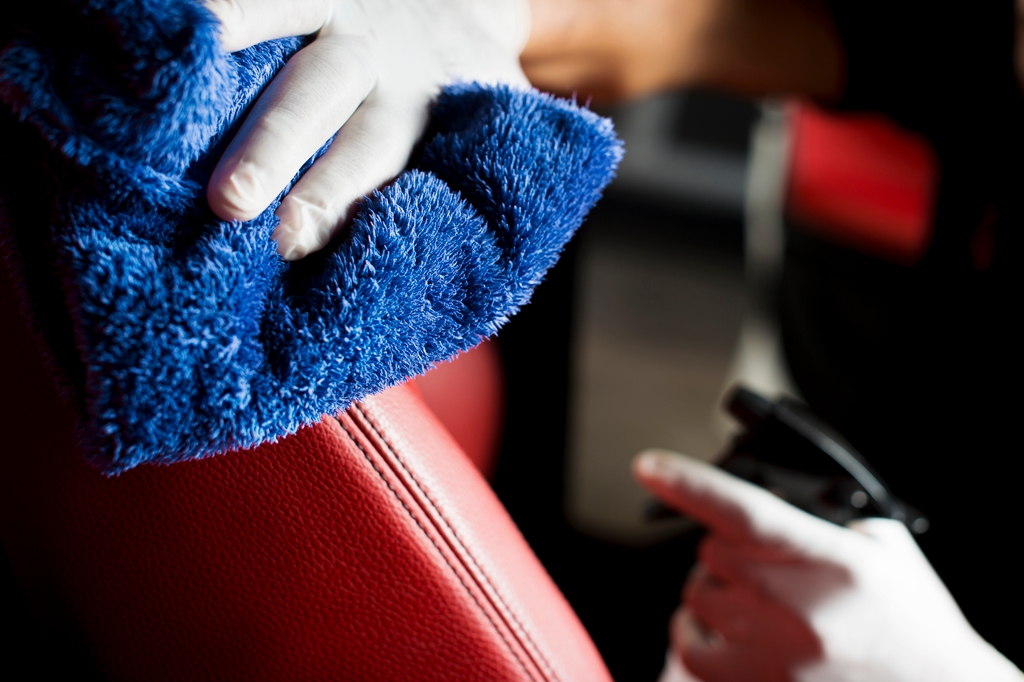What is Faux Leather?
Faux leathers are essentially a layer of synthetic material that’s embossed with a leather like grain and is backed with fabric. However, there are a range of different types and qualities – the most common being PVC (poly vinyl chloride), Polyurethane and Polyamide microfibre.
There’s a huge variation on the market but ours are mainly made with Polyurethanes. We prefer Polyurethanes as they are easier to care for and better for the environment. Our Faux leather is also completely vegan, unlike some types of faux leather, called bicast leather, that takes the fibrous part of cowhide leftover from manufacturing real leather and adds a layer of polyurethane on top.
Protection and prevention
Although Real and Faux leather can look almost the same, they are very different! Having said that, some of the principles of caring for leather can be applied to faux leather. A protective treatment is a great precaution but with a different effect: unlike with real leather, a protective treatment won’t penetrate and moisturise the faux leather, but rather will add a thin protective layer so that the surface is easier to clean.
Leather conditioner, baby oil and coconut oil are the most common and affordable products we have been told have been useful for the protection of faux leather.
Regular mild clean
Faux leather is easy to clean with its protective surface, mild is the order of the day when cleaning! The main rule with all types of Faux Leather is not to over clean it with a solution that is too strong. If you do it will dry up the surface and cause it to crack and break up. It’s a good idea to give the surface a regular once over to keep on top of general little marks that just build up with use. We recommend warm water with some washing up liquid and a non-abrasive cloth. Wring the cloth out so that it’s not dripping wet and wipe over. Follow up by drying off with a soft cloth such as a microfiber cloth. This stops general wear and tear, sweat and everyday marks from building up.
Things to keep in mind when maintaining faux leather:
Sunlight
Direct sunlight can dry out faux leathers. If your chair is in a sunny spot, move it around and put it under the shed. Never leave your chair outdoor exposed to elements.
Heat, sweat and moisture
Exposure to the heat and moisture for an extended period destroys faux leather. If you are sweating while you sit in the chair, it is too hot. Be sure to use air conditioning and ventilation devices in hot climate and give this a wipe as soon as you notice any sweat mark, as it’s the kind of stain that will penetrate if left. A quick wipe down with a baby wipe after use should keep this at bay. It’s the kind of damage that only becomes obvious once it’s been there a while and by then it’s generally too late. The regular once over will also help this.
Use of seat cover
If you share the chair with kids and pets, or you use it in hot climate without good ventilation, it is a smart idea to use a seat cover to protect the faux leather. We have one design specific for our chairs Airmat Chair Protector
Test first
Anything you put on your faux leather, try on a hidden part first just to check that there is no adverse reaction. Test it, let it dry and then try on the visible parts.
Soft nonabrasive cloths
Never be tempted to rub / scrub the surface or use any kind of abrasive cloth or sponge. Soft cloths and repeated circular motions are all you need. Scrubbing will crack the faux leather, not remove the mark.
Clean after cleaning
Whatever you use to clean a mark, whether it works or not, always give it a wipe afterward with mild detergent. The cleaners will do the job but they are not meant to be left on the surface for long periods of time.




